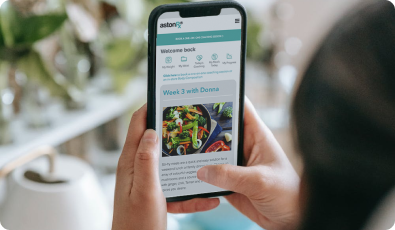The Vital Role of Electrolytes — and Why They Matter Even More on a Reduced-Carb Diet
Electrolytes are the quiet powerhouses behind nearly every essential function in your body. These minerals — sodium, potassium, magnesium, calcium, chloride, and carbon dioxide — help regulate hydration, nerve impulses, muscle contractions, blood pressure, and pH balance. Without them in proper balance, your body can’t function optimally.
Whether you’re an athlete, someone with a chronic condition, or simply striving to feel and perform at your best, understanding electrolyte balance is vital — especially during the early stages of the AstonRX program.
Why Electrolytes Matter More on AstonRX
As insulin levels begin to decline in the first weeks of the program, your kidneys start releasing more sodium and water. This can temporarily increase urine output, resulting in dehydration and a loss of key electrolytes — particularly sodium, potassium, and magnesium.
Even minor imbalances can lead to symptoms like:
-
Headaches
-
Brain fog
-
Nausea
-
Dizziness
-
Insomnia
-
Lethargy
While these symptoms are usually short-lived, they can persist if your electrolytes aren’t properly replenished.
Key Electrolytes: Symptoms and Solutions
Sodium
Symptoms of low sodium: Fatigue, weakness, headaches, dizziness, difficulty concentrating, irritability.
Solution: Add more salt to your meals. In the first week, consider 1–2 cups of clear bone broth per day, a pinch of salt in water, or even a small rock of salt under the tongue.
Tip: Relief from low sodium is usually felt within 30 minutes.
Need-to-know: On a lower-carb diet, your sodium needs increase.
If exercising, take 1/4 teaspoon of salt 30 minutes prior for improved performance.
Caution: If you have high blood pressure, heart failure, or kidney disease, consult your doctor before increasing sodium.
Potassium
When sodium drops, your kidneys may excrete more potassium to maintain internal balance.
Symptoms: Heart palpitations, nausea, fatigue, low blood pressure, constipation.
Solution: Boost potassium-rich foods such as:
-
Avocado
-
Cooked spinach
-
Salmon, meat, mushrooms
-
Lemon or lime juice
Caution: Speak with your doctor if you are medicated for high blood pressure, heart or kidney issues before increasing potassium.
Magnesium
Symptoms: Night-time cramps, twitching, muscle weakness, anxiety, lethargy, difficulty swallowing.
Solution: Eat more magnesium-rich foods like leafy greens, broccoli, avocado, cabbage, salmon, and tuna.
You can also take a magnesium supplement or soak in an Epsom salt bath.
Caution: Check with your doctor if you have kidney disease or take medications that affect magnesium levels.
A Simple Electrolyte Rehydration Recipe
To support balance during the early stages of your program or after intense activity, try this DIY electrolyte drink over 4 consecutive days:
-
2L water
-
Juice of one large lemon (potassium)
-
1 tsp salt (sodium)
-
1 tsp magnesium powder (e.g. Bioceuticals Ultra Muscleze Night)
Sip 500ml daily over 4 days.
You may also consider a product such as this - unflavoured and unsweetened.
Note: This may not be suitable for individuals with kidney disease or certain medications. Check with your healthcare provider.
In summary:
Electrolyte imbalances can disrupt everything from your energy to your digestion, mood, and focus. The body’s demand for electrolytes is constant — and even more critical as insulin drops and your metabolism recalibrates.
Balance starts with awareness. Stay hydrated, fuel wisely, and don’t underestimate the power of salt, potassium-rich foods, and magnesium support. You’ll not only avoid the typical “low-carb flu,” but feel clearer, stronger, and more energised — right from the start.
























